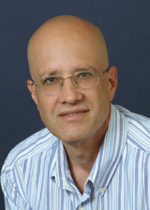
Allergic conditions can begin at any age. Infants can
develop eczema soon after birth. Babies can also suffer from
asthmatic reactions to viruses, with chronic coughs and/or
wheezing following colds. Preschoolers may develop
sensitivity to milk and chronic sinus congestion or ear
problems. It is during the ages 5 through 10, however, that
allergies and asthma become especially prevalent. Children
at this age develop seasonal hay fever attacks and asthmatic
reactions to animals, dust mites, and plants. Asthma may
also manifest as exercise-induced wheezing when children
begin playing sports (soccer, basketball, swimming) that
challenge their endurance.
Allergies affect about 38
percent of all Americans, and about 5 percent of the U.S.
population has asthma. The highest proportion of asthma is
among children age 5 to 14, a total of 5 million children.
Childhood asthma has increased by more than 40 percent since
1980. In other parts of the world, the numbers are even
higher. In Western Europe as a whole, asthma cases have
doubled in the last ten years, according to the UCB
Institute of Allergy in Belgium. “The prevalence of asthma
in children can be as high as 30 percent in certain
populations,” explained Professor Romain Pauwels, Chairman
of the Global Initiative for Asthma (GINA). “In Australia,
for example, one child in six under the age of 16 is
affected today. Experts are struggling to understand why
rates worldwide are, on average, rising by 50 percent every
decade.”
Many researchers have looked at the growing number of
childhood vaccines as a likely cause of the rise in
childhood asthma. Several clinical studies have confirmed an
association between vaccination and asthma. A team of New
Zealand researchers followed 1,265 children born in 1977. Of
the children who were vaccinated, 23 percent had asthma
episodes. A total of 23 children did not receive the DTP
vaccines, and none of them developed asthma (Kemp et al.,
1997). A study in Great Britain produced similar findings
that associated asthma with the pertussis vaccine. In that
study, 243 children received the vaccine and 26 of them
later developed asthma (10.7 percent), compared to only 4 of
the 203 children who had never received the pertussis
vaccine (2 percent). Additionally, of the 91 children who
received no vaccines at all, only one had asthma. Therefore,
the risk of developing asthma was about 1 percent in
children receiving no vaccines and 11 percent for those
children who received vaccines, including pertussis (Odent
et al., 1994). A third study was conducted in the U.S. from
data in the National Health and Nutrition Examination Survey
of infants through adolescents aged 16. Data showed that
children vaccinated with DTP or tetanus were twice as likely
to develop asthma, compared to unvaccinated children
(Hurwitz and Morgenstern, 2000). Medications given to
children early in life also have a significant effect on the
incidence of asthma. Children given antibiotics or
acetaminophen (Tylenol) at some time prior to age 4 were
nearly twice as likely to develop asthma, compared to a
control group (Cohet et al., 2004). One group of researchers
discovered a possible cause for the development of asthma as
a consequence of antibiotic use. Mice given antibiotics
developed an alteration of intestinal bacteria and an
increase in the growth of intestinal yeast. These mice
developed typical allergic responses in the lungs when they
were exposed to mold spores. Mice that did not receive
antibiotics did not experience the allergic reactions
(Noverr et al., 2004).